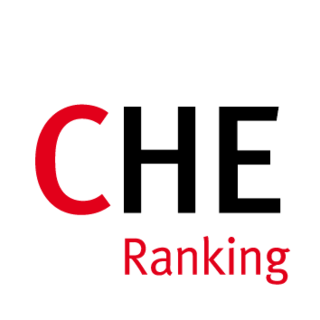 W
WThe Academic Ranking of World Universities (ARWU), also known as the Shanghai Ranking, is one of the annual publications of world university rankings. The league table was originally compiled and issued by Shanghai Jiao Tong University in 2003, making it the first global university ranking with multifarious indicators.
 W
WThe CHE University Ranking is an annual ranking of German universities and colleges. It is a subject‐specific, multidimensional system aimed at providing information for students, with its main emphasis on teaching, rather than research. Introduced in 1998 and published by the Centre for Higher Education in cooperation with Die Zeit, it is the most comprehensive ranking of its kind in Germany.
 W
WCriticism of college and university rankings has been voiced by a 2007 movement which developed among faculty and administrators in American Institutions of Higher Education. It follows previous movements in the U.S. and Canada which have criticized the practice of college rankings. The arguments of those who criticize the ranking are that it is not possible to come with a single number that characterizes university performance. Ratings, as argued by academic institutions and their leaders, can be easily manipulated and include such subjective characteristics as the "reputation" determined by surveying university administrators such as chancellors or deans. Methodology of many rankings emphasizes research expenditures as the only measure of scientific accomplishments despite the concern that measuring science by the amount of money spent rather than by the importance and impact of scientific discoveries or the depth of the ideas could encourage costly projects that are not necessary scientifically sound.
 W
WCriticism of college and university rankings refers to movements which developed among faculty and administrators in American Institutions of Higher Education as well as in Canada. The arguments of those who criticize the ranking are that it is not possible to come with a single number that characterizes university performance. Furthermore, ratings can be easily manipulated and include such subjective characteristics as the “reputation” determined by surveying university administrators such as chancellors or deans.
 W
WThe National Institutional Ranking Framework (NIRF) is a methodology adopted by the Ministry of Education, Government of India, to rank institutions of higher education in India. The Framework was approved by the MHRD and launched by Minister of Human Resource Development on 29 September 2015. There are separate rankings for different types of institutions depending on their areas of operation like universities and colleges, engineering institutions, management institutions, pharmacy institutions and architecture institutions. The Framework uses several parameters for ranking purposes like resources, research, and stakeholder perception. These parameters have been grouped into five clusters and these clusters were assigned certain weightages. The weightages depend on the type of institution. About 3500 institutions voluntarily participated in the first round of rankings.
 W
WRankings of universities in South Africa are largely based on international university rankings, since there are no South African rankings as of yet.
 W
WTimes Higher Education World University Rankings is an annual publication of university rankings by Times Higher Education (THE) magazine. The publisher had collaborated with Quacquarelli Symonds (QS) to publish the joint THE-QS World University Rankings from 2004 to 2009 before it turned to Thomson Reuters for a new ranking system from 2010–2013. The magazine signed a new deal with Elsevier in 2014 who now provide them with the data used to compile the rankings.
 W
WThe Tompkins Table is an annual ranking that lists the Colleges of the University of Cambridge in order of their undergraduate students' performances in that year's examinations. Two colleges—Darwin and Clare Hall—do not have undergraduate students and therefore do not feature in the list. It was created in 1981 by Peter Tompkins, then a third-year undergraduate mathematics student at Trinity College, who until 2015 compiled it every year exclusively for the newspaper The Independent. Since 2016, it has been published by Varsity, a student newspaper of the University of Cambridge. It is not an official University of Cambridge table. It does not take account of students who are not candidates for Honours degrees, or those who have failed to gain a degree.
 W
WUniversity Compare is a free university comparison website, founded in 2012, by UK entrepreneur, Owen O'Neill. The website aims to provide students information on universities in the United Kingdom, their degrees as well as providing information on the living experience of university, detailed guides on the various university cities in the UK and general advice. The website is for students that enter higher education through Universities and Colleges Admissions Service (UCAS) each year.